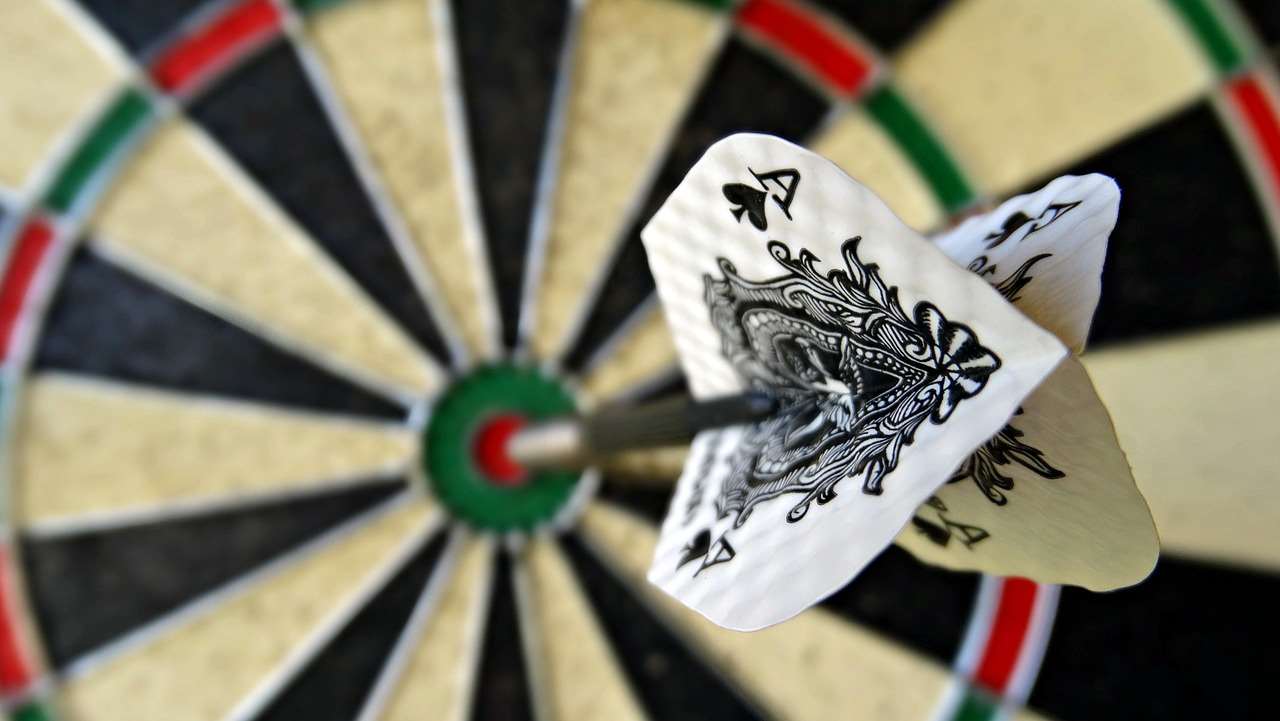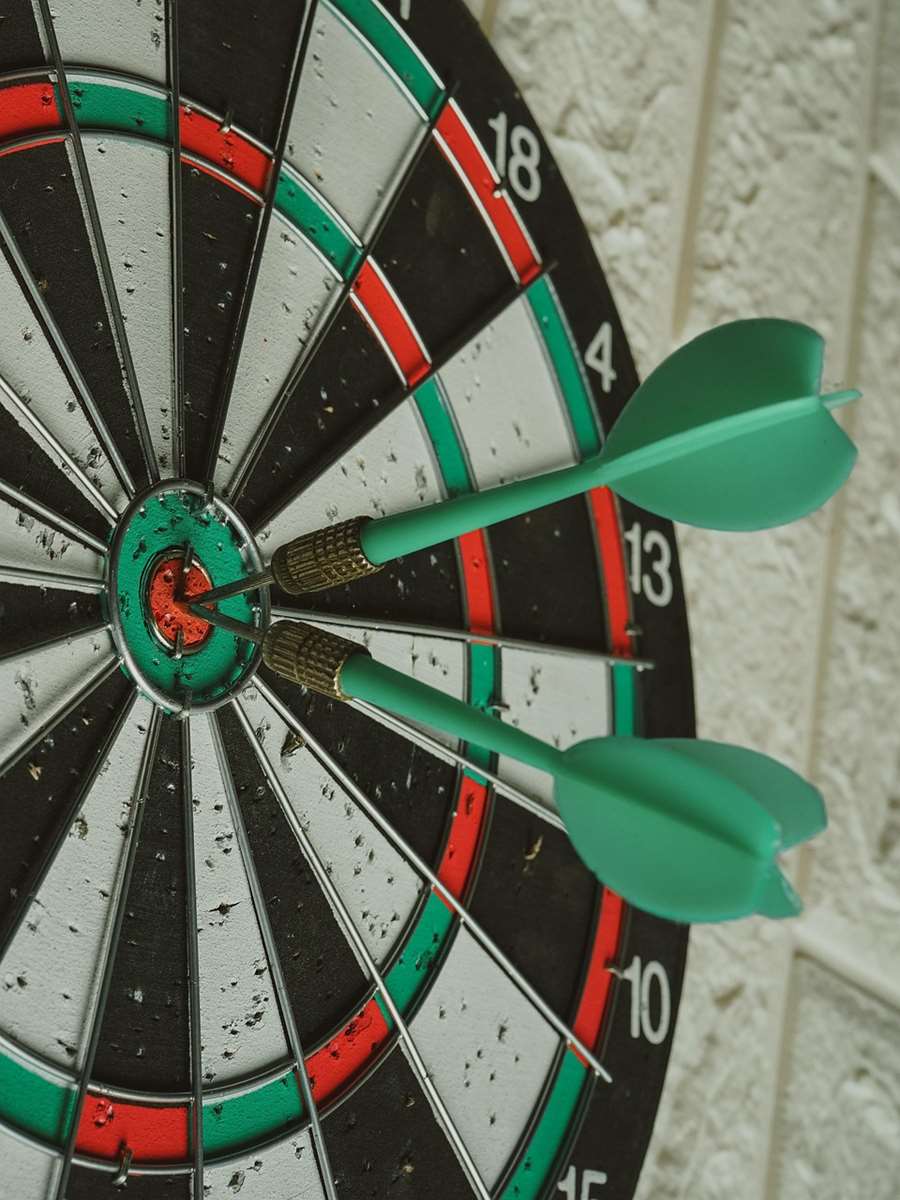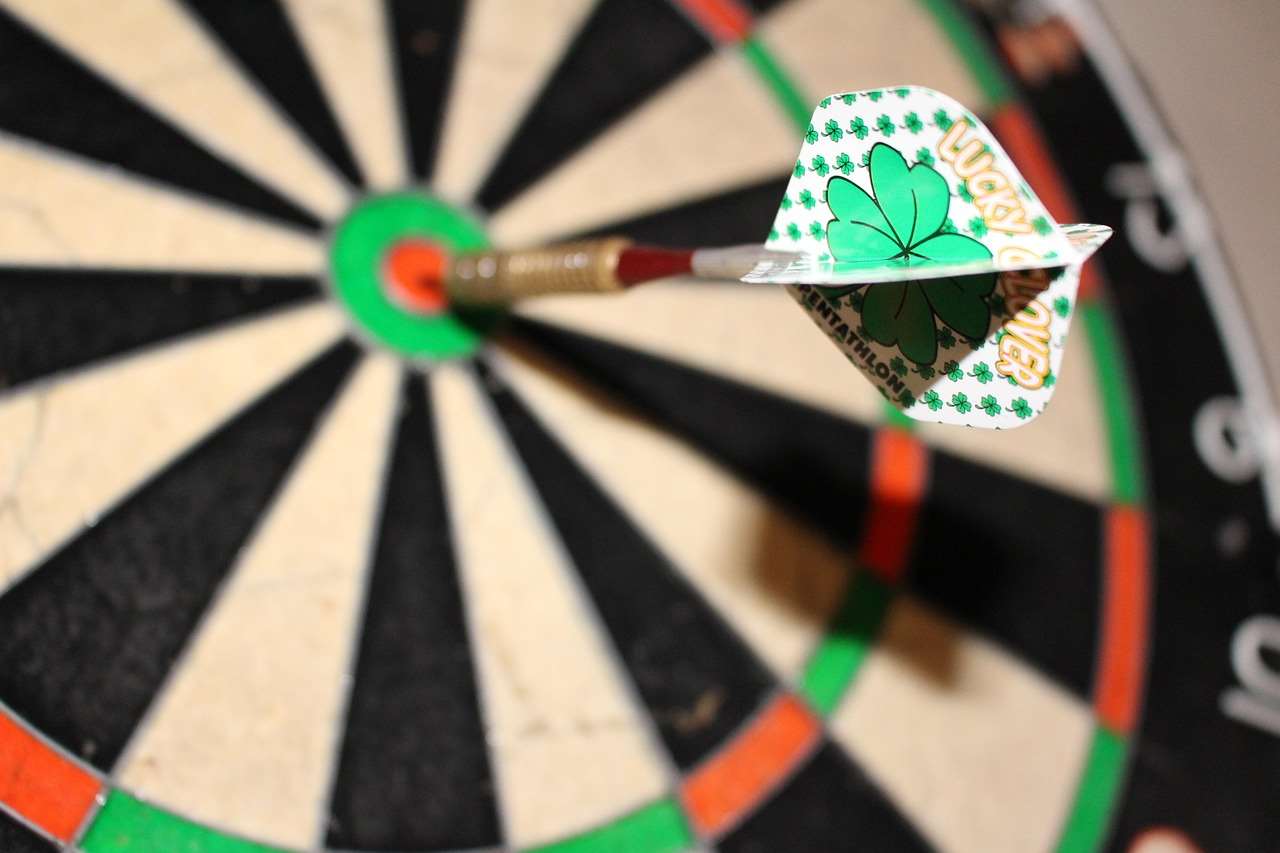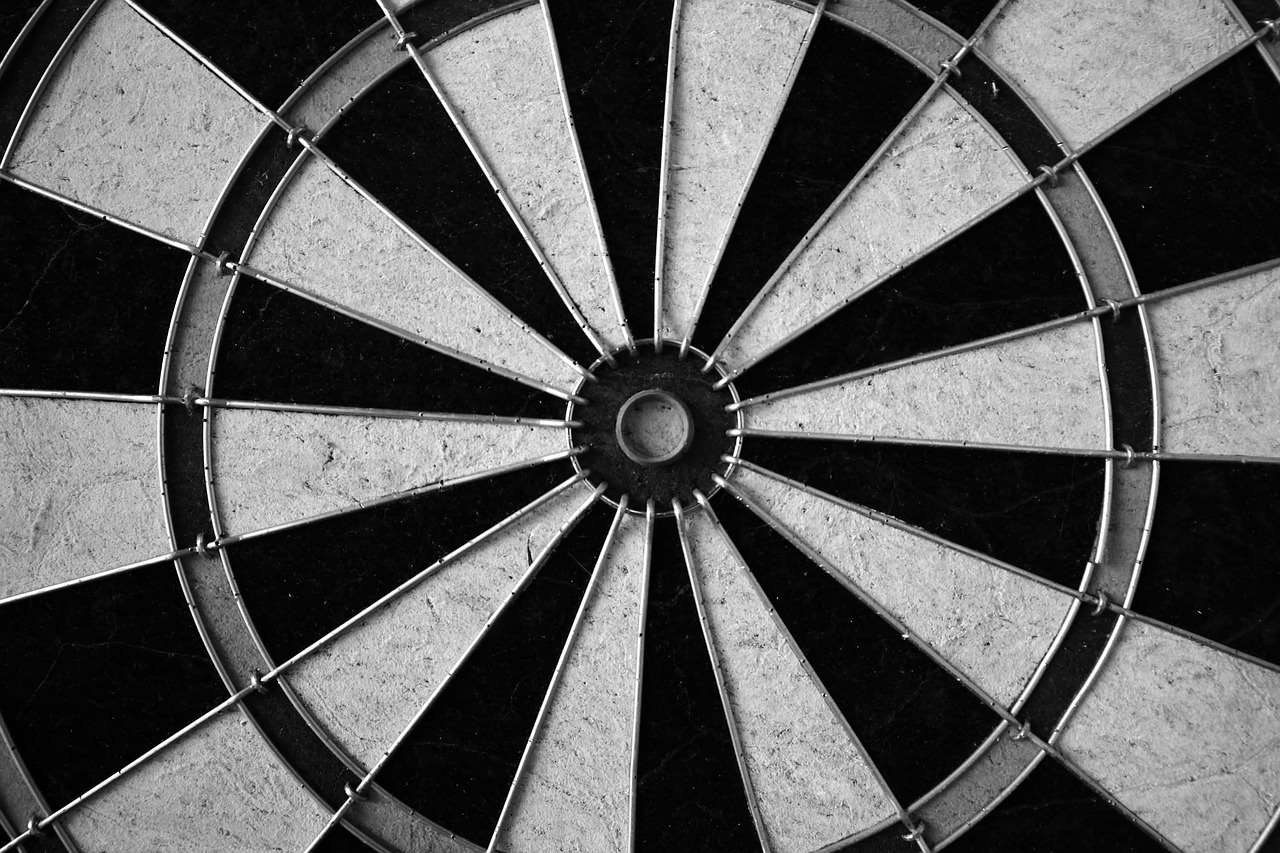Setting realistic goals for your 501 darts game is crucial for maintaining motivation and enjoying the sport while improving your skills. This article will guide you through creating achievable milestones, understanding your current skill level, and tailoring your practice to see tangible progress on the dartboard.
⚠️ Still Using Pen & Paper (Of een schoolbord)?! ⚠️
Stap in de toekomst! De Dart Teller -app behandelt alle scoren, stelt kassa voor, en volgt uw statistieken automatisch. It's easier than you think!
Probeer de Smart Dart Teller -app gratis!Klaar voor een upgrade? Klik hierboven!
Why Setting Realistic Goals Matters in 501 Darts
Darts, particularly the game of 501, can be incredibly rewarding, but also frustrating. Without a clear roadmap, it’s easy to become discouraged by inconsistent performance. That’s where goal setting comes in. Effectief goal setting provides direction, fuels motivation, and allows you to track your progress objectively. Consider it like this: you wouldn’t start a journey without knowing your destination, would you? The same principle applies to darts. Setting realistic goals for your 501 darts game helps you chart your course and stay on track.
The Downside of Unrealistic Expectations
Imagine aiming to hit a 180 every game when your average score is closer to 40. This is a recipe for disappointment. Unrealistic expectations can lead to:
- Frustration and burnout: Constantly falling short of unattainable goals can make you lose interest in the game.
- Negative self-talk: Repeated failure can damage your confidence and lead to self-doubt.
- Lack of progress: Focusing on unrealistic outcomes can distract you from identifying and addressing your actual weaknesses.

By contrast, achievable goals create a positive feedback loop. Success breeds motivation, encouraging you to push yourself further and continue improving your game. Begrip Basic Darts Fundamentals for Beginners (Basic Darts Fundamentals for Beginners) is also key to a solid foundation.
Assessing Your Current Skill Level
Before you start setting goals, you need to understand where you’re starting from. This involves honestly assessing your current abilities and identifying areas for improvement. Here are some key factors to consider:
Tracking Your Averages
Your average score per dart and per three darts is a crucial indicator of your current level. Keep a record of your scores over several games to get a realistic picture. Don’t just rely on your best games; focus on the average. This provides a baseline for improvement.
Identifying Your Strengths and Weaknesses
Are you consistently hitting trebles in certain segments? Worstel je met dubbel? Are you more accurate under pressure or when playing casually? Understanding your strengths allows you to build on them, while identifying weaknesses helps you focus your practice. Perhaps you need to look at Adapting darts rules for beginners.
Analyzing Your Accuracy
Beyond just scoring, analyze where your darts are landing. Are they consistently grouping in a particular area, even if it’s not the intended target? This can reveal issues with your stance, grip, or throw. Consider using a “spider web” overlay on your dartboard to visually track dart placement. Understanding your accuracy also helps you identify how Alternative darts rules for home play can give you an edge.

Types of Realistic Goals for Your 501 Darts Game
Once you have a solid understanding of your current skill level, you can start setting realistic goals. These goals should be SMART: Specific, Measurable, Achievable, Relevant, and Time-bound.
Short-Term Goals (Weeks)
These are smaller, more immediate goals that focus on specific areas of your game. Examples include:
- Improving your average score by 3 points per three darts within the next two weeks.
- Consistently hitting a specific double (Bijv., double 20) in 3 out of 5 attempts.
- Reducing the number of missed darts outside the scoring area by 50%.
Mid-Term Goals (Months)
These goals build on your short-term progress and focus on broader improvements in your overall game. Examples include:
- Increasing your average score by 10 points per three darts within the next two months.
- Achieving a checkout percentage of 30% or higher.
- Winning a local darts tournament or league match.
Long-Term Goals (Years)
These are the ultimate aspirations for your darts game. They should be ambitious but still grounded in reality. Examples include:
- Qualifying for a regional or national darts competition.
- Achieving a consistent average score above a certain threshold (Bijv., 60 points per three darts).
- Becoming a recognized player within your local darts community.

Tailoring Your Practice for Goal Achievement
Setting realistic goals for your 501 darts game is only half the battle. You also need to tailor your practice sessions to address your weaknesses and reinforce your strengths.
Focusing on Specific Areas
Instead of just throwing darts aimlessly, design your practice sessions to target specific areas of improvement. Bijvoorbeeld, Als je worstelt met dubbel, dedicate a portion of your practice to throwing at different double segments. If you need inspiration you could review Fun dart game variations with modified rules.
Using Structured Drills
Implement structured drills to improve your accuracy and consistency. These drills can include:
- Round the board: Hit each number on the board in sequence.
- Checkout practice: Practice finishing games from various scores.
- Treble 20 uitdaging: See how many treble 20s you can hit in a row.
Varying Your Practice
Don’t get stuck in a rut. Vary your practice sessions to keep things interesting and challenge yourself in different ways. Try playing different games, practicing with different types of darts, or experimenting with different stances and grips. Consider how Adapting darts rules for small spaces: tips and tricks might change your practice setup.

Monitoring Your Progress and Adjusting Your Goals
Regularly track your progress and adjust your goals as needed. What worked in the beginning might not be as effective later on, so it’s important to be flexible and adapt your approach. Also, you might want to consider How to make darts fairer with handicap rules if playing with others.
Keeping a Darts Journal
Maintain a darts journal to record your scores, Volg uw voortgang, and note any observations about your game. This will help you identify patterns and trends, and make informed decisions about your training. Note things like how you felt physically and mentally, what you ate or drank beforehand, and any other factors that might have influenced your performance.
Evaluating Your Performance Regularly
Set aside time each week or month to review your progress and evaluate your performance. Are you on track to meet your goals? Do you need to adjust your practice routine? Are there any new areas you need to focus on? Be honest with yourself and make the necessary adjustments.
Celebrating Your Achievements
Don’t forget to celebrate your successes, no matter how small. Rewarding yourself for achieving your goals will help you stay motivated and engaged in the process. This could be as simple as buying yourself a new set of flights or treating yourself to a night out with friends.

The Mental Game and Goal Setting
The mental aspect of darts is just as important as the physical skills. Your mindset and attitude can significantly impact your performance. Setting realistic goals for your 501 darts game can help you cultivate a more positive and focused mental approach.
Visualization Techniques
Practice visualizing yourself achieving your goals. Imagine yourself hitting the winning double or consistently scoring high averages. This can help you build confidence and improve your focus. Before each throw, take a moment to visualize the dart hitting its target.
Positieve zelfpraat
Vervang negatieve gedachten door positieve bevestigingen. In plaats van na te denken “I can’t hit this double,” try thinking “I can hit this double if I focus and execute my throw properly.” Your self-talk can significantly impact your confidence and performance.
Managing Pressure
Learn to manage pressure situations effectively. Practice throwing darts under pressure by simulating game scenarios and creating artificial stakes. Develop strategies for staying calm and focused when the pressure is on. Herinneren, even professional players miss occasionally. It’s how you respond to those misses that matters most.
Conclusie: Achieving Darts Success Through Realistic Goal Setting
Setting realistic goals for your 501 darts game is not just about improving your score; it’s about enhancing your enjoyment of the game and fostering a sense of accomplishment. By assessing your current skill level, setting SMART goals, tailoring your practice, and monitoring your progress, you can create a positive and rewarding darts experience. Remember to stay patient, persistent, and positive, and you’ll be well on your way to achieving your darts aspirations. Start small, celebrate your successes, and enjoy the journey. The first step is to grab your darts and start planning your path to improvement!
Hoi, Ik ben Dieter, En ik heb Dartcounter gemaakt (Dartcounterapp.com). Mijn motivatie was geen darts -expert - helemaal tegenovergestelde! Toen ik voor het eerst begon te spelen, Ik hield van het spel, maar vond het moeilijk en afleidend om nauwkeurige scores te houden en statistieken te volgen.
Ik dacht dat ik niet de enige kon zijn die hiermee worstelde. Dus, Ik besloot om een oplossing te bouwen: een eenvoudig te gebruiken applicatie die iedereen, Ongeacht hun ervaringsniveau, zou kunnen gebruiken om moeiteloos te scoren.
Mijn doel voor Dartcounter was eenvoudig: Laat de app de nummers afhandelen - het scoren, de gemiddelden, de statistieken, Zelfs checkout suggesties - zodat spelers puur kunnen richten op hun worp en genieten van het spel. Het begon als een manier om het probleem van mijn eigen beginners op te lossen, En ik ben heel blij dat het is uitgegroeid tot een nuttig hulpmiddel voor de bredere darts -community.